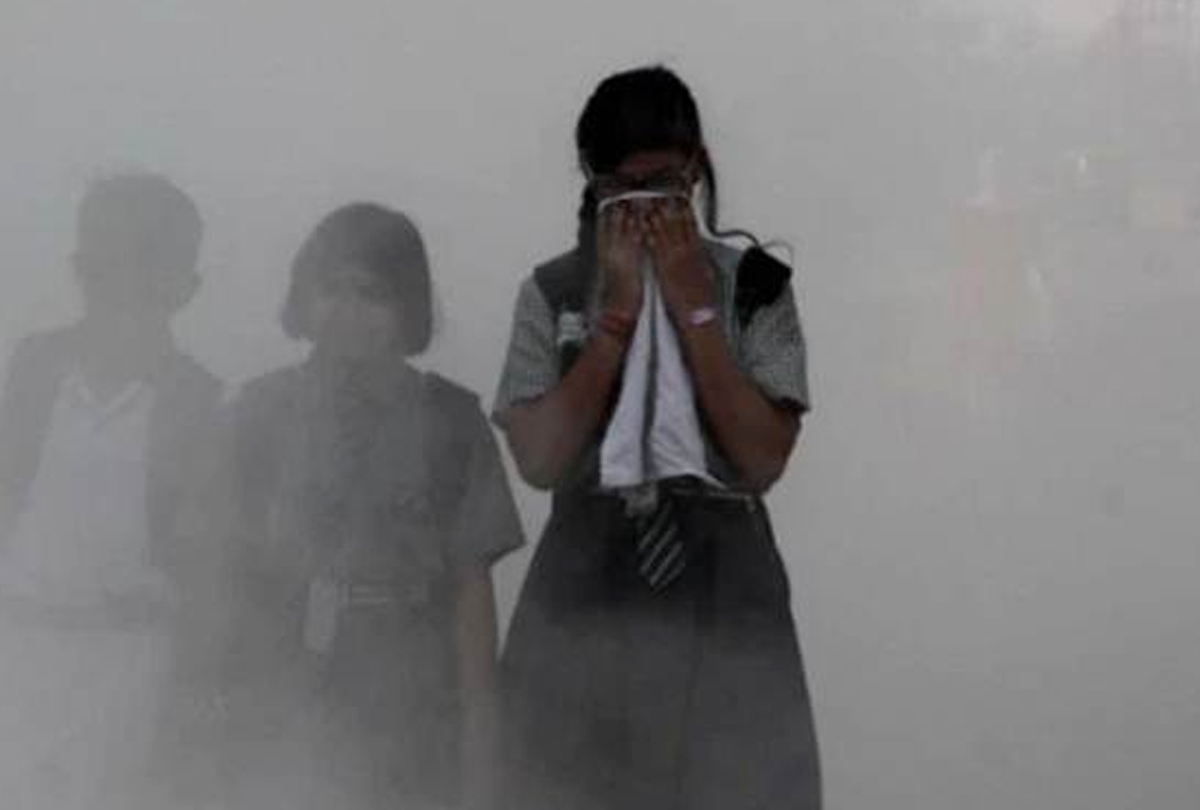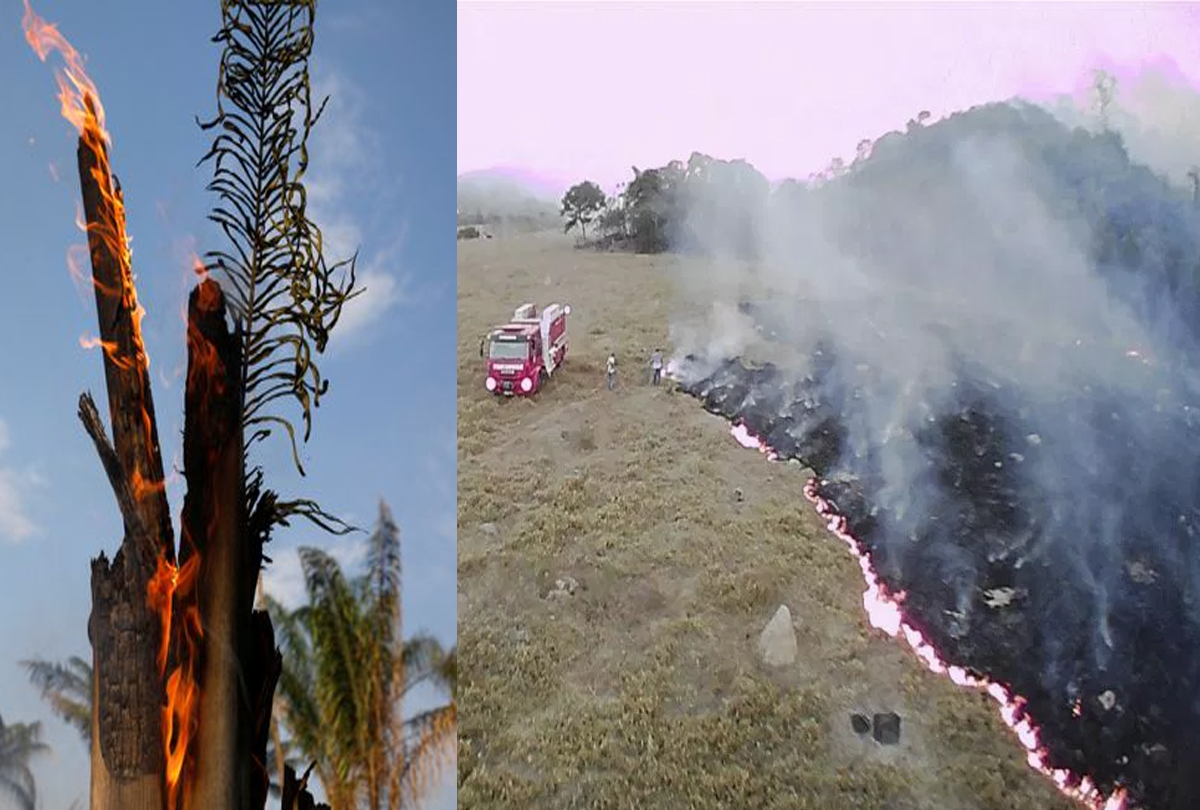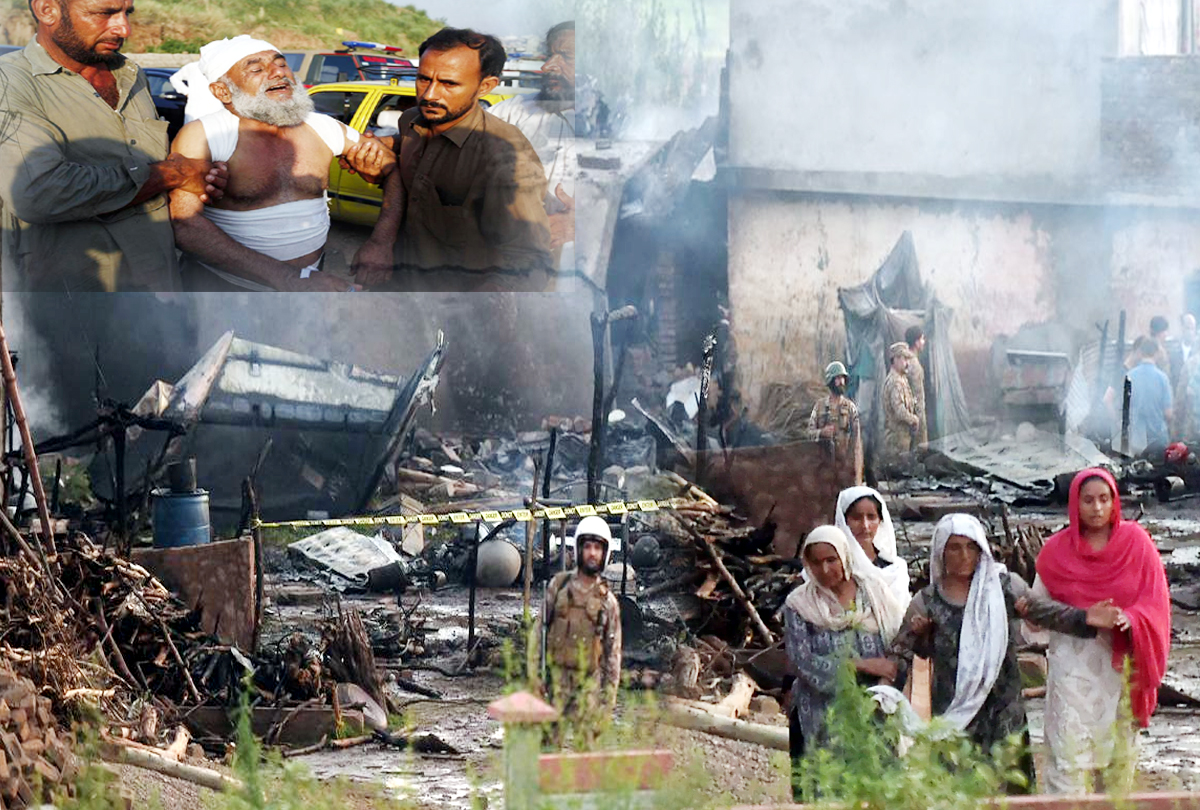Pollution Rises To Hazardous Levels; Flights Delayed As Thick Smog Engulfs Delhi-NCR

[Edited By: Gaurav]
Sunday, 3rd November , 2019 12:25 pmPollution levels in the national capital and adjoining areas once again spiked on Sunday morning with the city's overall Air Quality Index (AQI) standing at 625 at 10 AM, a day after Delhi-NCR recorded a marginal decline following a slight increase in the wind speed.
Notably, for the first time in this season, the Air Quality Index (AQI) docked as high at 10 in the morning despite light drizzles in the early hours.
The levels of PM2.5 -- the tiny particulate matter of less than 2.5 microns in diameter that can enter the lungs and even the bloodstream, were 758 micrograms per cubic meter at 8:30 am; the PM10 level was at 890.
Apart from the capital, Uttar Pradesh's Ghaziabad and Noida are also reeling under the wave of severe air pollution. In both places, the AQI has crossed the mark of 600.
People residing in these areas complained of eye irritation and suffocation due to deteriorating air quality.
"We are athletes and have most of the events in the winter seasons. This thick smog is affecting our health making it difficult to breathe in the poisonous air. The government must do something about it," Prashant Shukla, a local from Ghaziabad, told ANI.
"Due to dense fog and poor visibility in Delhi, arrivals/departures from Delhi delayed with consequential impact across the network," Air Vistara tweeted.
On Saturday, weather experts said there was a significant improvement in wind speed and it will increase gradually. Winds gusting up to 20-25 kilometres per hour are likely in the region from Sunday to Tuesday, they said.
Scattered rainfall in Punjab, Haryana, Rajasthan and Delhi is likely on November 7 and 8 under the influence of Cyclone Maha and a fresh western disturbance, the weather office said.
This rainfall, however light, will be significant in terms of reducing the effect of stubble burning, and will wash away pollutants, they said.
On Friday, the Supreme Court-mandated Environment Pollution (Prevention and Control) Authority declared the public health emergency, following which the Delhi government decided to shut all schools.
The EPCA also banned construction activities in Delhi-NCR till November 5.
Chief Minister Arvind Kejriwal termed Delhi a "gas chamber" and blamed stubble burning in neighbouring Haryana and nearby Punjab for the apocalyptic haze shrouding the city.
The share of stubble burning in Delhi's pollution stood at 46 per cent on Friday, the highest so far, according to the Ministry of Earth Sciences' air quality monitor, SAFAR.
The AQI entered the 'severe plus' or 'emergency' category late Thursday night in Delhi, the first time since January this year.
An AQI between 0-50 is considered 'good', 51-100 'satisfactory', 101-200 'moderate', 201-300 'poor', 301-400 'very poor' and 401-500 'severe'. Above 500 falls in the 'severe plus' category.
Latest News
-
2-Doxy-D is a game-changer drug - discovered by sc
-
UP Covid News: Recovery rate rises 86 percent in U
-
Big B orders 50 oxygen concentrators from Poland,
-
Today is Akshay tritiya-PM Modi and Akhilesh yadav
-
Kanpur health department doing preparations to fig
-
UP Govt. must be held accountable for "failing" it
-
16 doctors in Unnao UP resign yesterday but retrac
-
Vaccine is safety cycle against corona pandemic-CM
-
Life of every person is priceless,rescue is the be
-
Kanpur Municipal Corporation will make dust free K
-
Corona vaccination: UP government withdraws the de
-
UP Government should follow the orders of Highcour
-
Uttar Pradesh-IG roaming in the city without the u
-
PM, take off those pink goggles, by which nothing
-
Rahul Gandhi's counterattack on BJP Government’s s
-
Happy international nurse day-PM Modi, Rahul Gandh
-
Online food delivery and liquor shops can open the
-
Egoistic BJP should work in public interest instea
-
High court directed UP Government to make a Covid
-
Isolation rooms to be built in industrial units, a
-
WHO has appreciated the effort of the Yogi Adityan
-
Brother is forced to carry his corona afflicted br
-
Lucknow- Free auto service for covid patients
-
Lucknow-Defense Minister and CM Yogi inaugurated
-
Wine shops opened in kanpur
-
Kanpur: oxygen demand 50 percent decrease as infec
-
Kanpur Crime Branch Police arrested 2 accused of i
-
Kanpur police's initiative to prevent corona infec
-
CM Yogi inspected the community health center in c
-
Corona's third wave: IIT professor claims not to c
World News
-
American president Appoints Two More Indian To Key
-
Arora Akanksha an Indian running for United Nation
-
Brazil thankes india with hanuman after receiving
-
Toronto protest against Indian citizenship law as
-
One-Of-A-Kind Wedding: After Groom's Father Gets A
-
Kim's Horse Ride On Sacred Mountain Hints At "Grea
-
Chinese President’s India visit on track, confirms
-
'Howdy Modi' event 'win-win' situation for Modi an
-
Malala urges U.N. to help Kashmiri children go bac
-
Rocket blast at U.S. Embassy in Kabul on 9/11 anni
-
PM Modi launches $4.2 mn redevelopment project of
-
Pakistan Blacklisted by FATF's: After Failing to A
-
Amazon Rainforest burning: Brazil President tells
-
10 shoking pics of Amazon Rainforest Burning
-
200 pakistan twitter accounts suspended on kashmir
-
Trump dials Imran Khan, asks to ‘moderate rhetoric
-
No policy change on Kashmir, says U.S.
-
Hamza, the son of Osama bin Laden, is dead
-
Ethiopians planted more than 200 million trees in
-
Pakistani military aircraft crash: All 5 crew memb
























